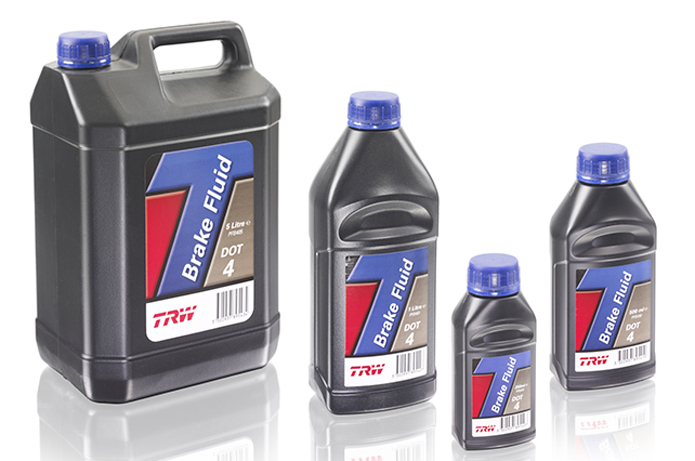What does it do?
Brake fluid
• What does it do?
• When and who should replace it?
• What can I do?
Although it is stating the obvious, brakes are your vehicle’s most important safety feature. As a driver, if you cannot stop, you are, in effect, behind the wheel of a potentially lethal weapon, so its brakes must work effectively and reliably.
Having your vehicle regularly and professionally serviced is key to ensuring the brakes work properly, as is the obligation, if it is three years old or more, to submit it for an annual MoT test. However, if you have any doubts about the performance of its brakes, you must consult an expert and have your vehicle’s brakes inspected by a qualified technician.
What does it do?
Despite the fact that the mechanical components such as the discs and pads/drums and shoes that actually stop the vehicle, the braking system relies on brake fluid to transfer the pressure you put on the pedal when you brake, to the brakes themselves. It does this by forcing the fluid through a series of narrow pipes to the brake calipers, to activate the brakes and works on the scientific principle that liquids cannot be compressed, which is why it is so effective.
However, in addition to its compressibility, brake fluid must also possess other attributes, such a high boiling point and low viscosity, even at sub-zero temperatures. In fact, these factors are so important that they define the way it is classified.
Most modern vehicles use glycol-based brake fluids, which are labelled using the Department of Transport (DOT) system, the most common being DOT 3, DOT 4 and DOT 5.1, with each referring to, among other things, their minimum boiling point and level of viscosity. Vehicles with a centralised braking system and clutch however, use a mineral-based fluid with the acronym LHM. Irrespective of the system in your vehicle, neither fluid should ever be combined and the correct specification for your vehicle is dictated by its manufacturer and identified in the owner’s operator handbook.
If the brake fluid has become contaminated, with debris or moisture for example, it will be less effective at applying the necessary pressure, which puts you, your passengers and other road users at greater risk.
But why?
As a normal consequence of time, brake fluid gradually absorbs external moisture that’s naturally present in the astmosphere, through the porosity of the vehicle’s brake pipes. This leads to a progressive deterioration of its original characteristics, especially the boiling point, which in fluid three years old, is likely to be considerably lower than that of new brake fluid.
Due to the heat generated by the braking process and the presence of moisture and other contaminates, the brake fluid can begin to boil and bubble, meaning it becomes partly gas. In contrast to liquid, gas can be compressed, which is why braking performance is reduced and this leads to less effective braking. In extreme cases, pressing the brake pedal can have almost no effect and this phenomenon is called vapour lock.
When and who should replace it?
Bearing these factors in mind, although brake fluid should be changed according to the vehicle manufacturer’s specific recommendations, the best advice is to have it replaced every two years. In addition, its appearance should be clear and clean. So, if it’s dark and cloudy, it suggests that it has accumulated impurities and is another indication it should be replaced.
As we have seen, brake fluid is a safety critical element within the vehicle’s braking system, which means it must only be changed by a qualified professional. So, if you have any doubts about the effectiveness of the brakes, never attempt to change anything yourself, simply take your vehicle to a reputable workshop and while changing the fluid, ask them to carry out a full inspection of the braking system.
What can I do?
As part of your responsibilities as an owner, it is wise to regularly check the level and appearance of the brake fluid. So, with the vehicle parked safely on a flat surface and when the engine is cool, open the bonnet and locate the master cylinder reservoir.
If the fluid looks clear and clean, and is somewhere between the ‘min’ and ‘max’ markings on the side of the reservoir, then all is well.
However, if the fluid level is above or below the markings, or appears cloudy, or is more than two years old, make sure you contact a professional – your life, and those around you, could depend on it!

